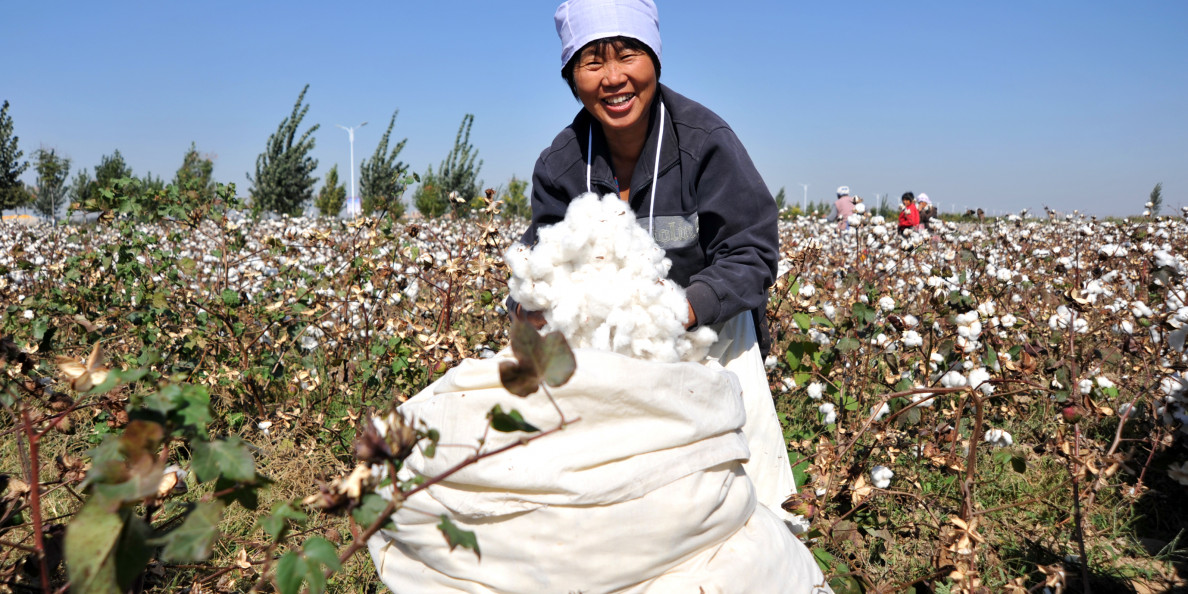On April 4 2018, U.S. government unveiled a list of Chinese imports, to levy 25pc tariffs on 1,333 goods imported from China valued $50 billion. In the afternoon on the same day, the State Council of China decided to levy additional tariffs of 25pc on 106 U.S. products, including soybeans, cars, chemicals and etc. Cotton, valued $980 million, is also included. The implementation date is not published yet. What impact will the news put on Chinese cotton market?
1. Document about the tariffs involved cotton
The document stated that the products on the list originating from U.S. will add additional 25 percent tariffs based on the current tax system and tax rate. For cotton, the tariff is 1% under WTO quota and 40% under Most Favored Nation tariff previously, and plus the additional 25% tariff, the tariff will be 26% and 65% respectively. But as the cotton under the WTO quota and the reserved cotton by the cotton auction can fulfill the gap of demand, almost no cotton is imported under 40% tariff in recent years, so the additional tariff mainly puts impact on the cotton under WTO quota. The processing trade part in bonded areas is not included.
| HS code |
Product |
Import value from U.S. |
| (million USD) |
| 52010000 |
Cotton, uncombed or uncarded |
982.74 |
| 14042000 |
Cotton linter |
8.71 |
The document stated that the 25% tariff will be levied on the cotton imported from U.S. worth $980 million. Calculated from the prices of U.S. cotton this year, the volumes related are about 500kt, basically the volumes imported from U.S. in 2017/18 season.
Of course, the effective data for the tariffs has not been revealed and Chinese government still considers that the economies of China and the United States are highly complementary, and cooperation is the only right choice between the two countries. But if U.S. continues to take a tough stance on this issue, the trade war will be fully exploded.
2. Market shares of cotton exported to China in U.S.
Viewed from the U.S. cotton exports released by USDA, exports to China accounts for about 15% of total exports, and about 11% of total output in recent years. Export dependency of Pima to China is higher, exports to China taking a share of about 37% in recent four years.

By the week ending Mar 22, China has purchased about 553.7kt of 2017/18 U.S. cotton, including 508.6kt of upland cotton and 44.7kt of Pima (313kt and 35.1kt have been shipped respectively). 2018/19 U.S. upland cotton has been sold 160.9kt to China.
Therefore, by Mar 22, 356.5kt of upland cotton and 10kt of Pima have not been shipped to China. After the news is released, this cotton may slow down to ship or the contract breach may increase.
3. Market shares of U.S. cotton in China
(1) Imported cotton structure in China

The proportion of U.S. cotton takes a relatively high share in total imports, especially in 2017 and 2018, imports from U.S. reach as high as 44%. With the additional 25% tariff, even under the WTO quota, the clearance costs will rise by 3,500yuan/mt.
(2) Imports of U.S. cotton in 2017/18 season

In 2017/18 season (from Sep 2017 to Feb 2018), China has imported 236.8kt of U.S. cotton.
If the additional 25% tariffs are implemented, Indian cotton has obvious price edge in short run. Brazilian and Australian cotton will arrive on the market soon. Therefore, the uncertainties about the cost performance increase in medium term.
4. Export crisis in end-user market
The additional tariffs of U.S. on Chinese products involve textile machinery, not with the textile and apparel temporarily. But if the situation is worse, the possibility to include textile and apparel may see. If it really happens, it will influence our end-user consumption directly. If the trade war is getting tough, the debt war is likely to see.
Conclusion
In short run, ZCE cotton futures market is likely to rise, but spot cotton market sales are expected to follow slowly. Cotton supply is not in shortage in China and large amount of U.S. cotton is in the bonded areas. For the medium and long run, the trade war between U.S. and China will not be beneficial for the two countries.





